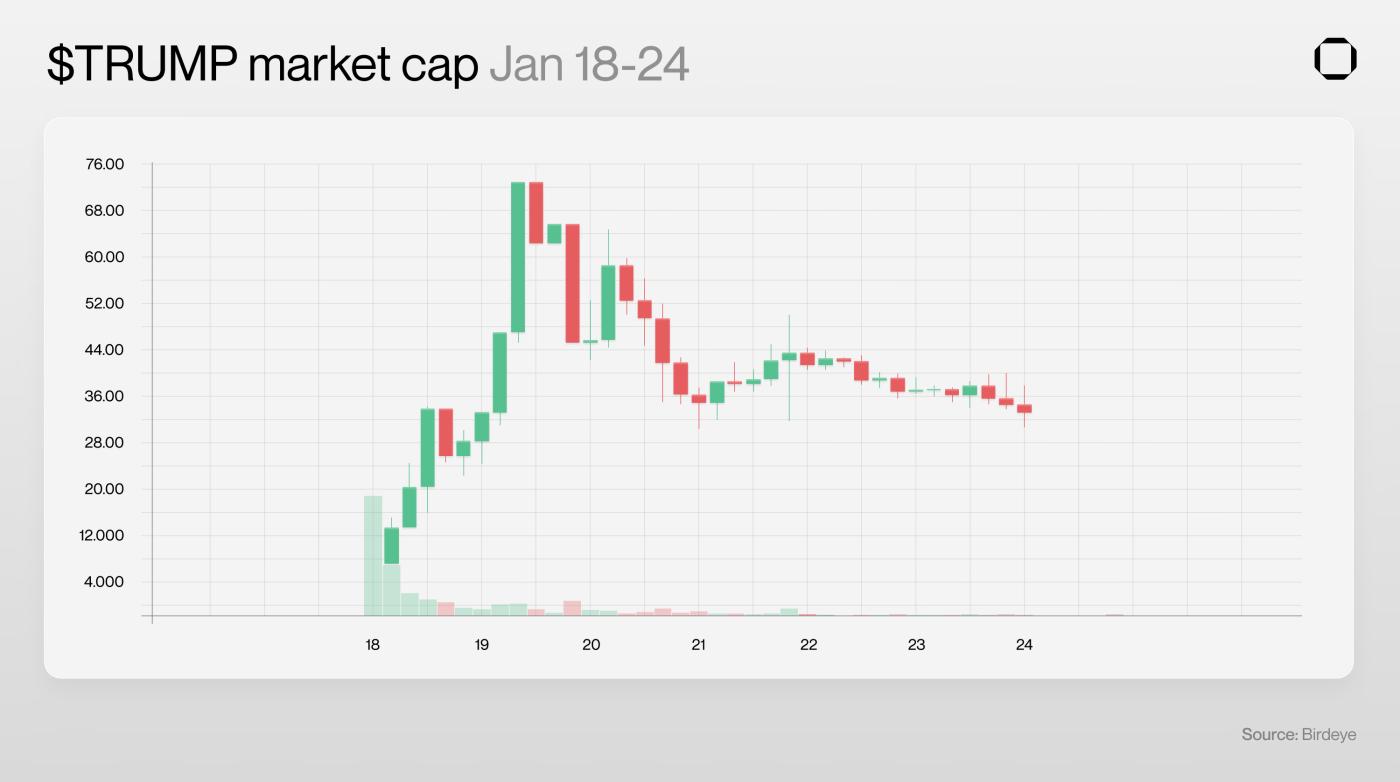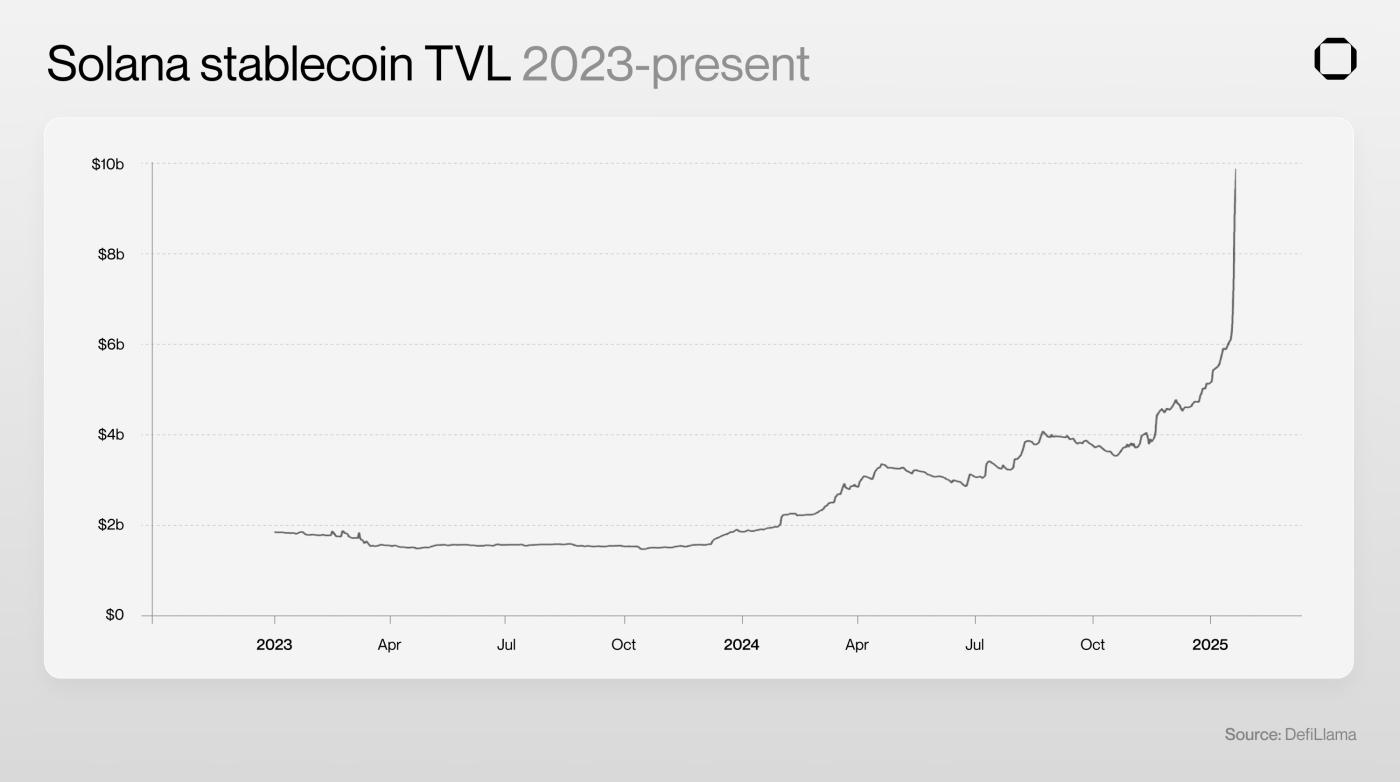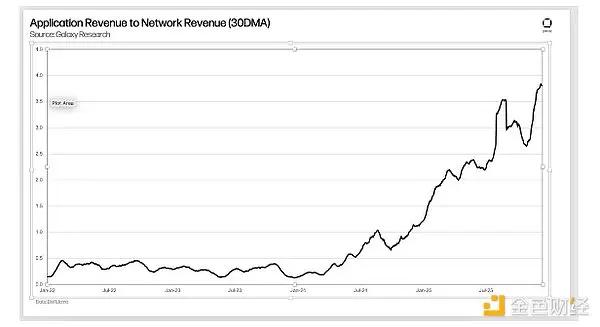Author: Squads
Compiled by: TechFlow
At the time of President Donald Trump's inauguration, the stablecoin market capitalization reached a record $210 billion - a figure that is just a glimpse of how stablecoins are reshaping global capital flows.
Accompanying this growth, the competition among companies to integrate stablecoins and their payment infrastructure into products and services has become increasingly fierce. In October 2024, Stripe acquired the stablecoin payment platform Bridge for around $1.1 billion, the largest acquisition in the crypto space to date. That same year, stablecoin payment companies raised over $309 million in funding, reflecting growing market confidence in this space.

The blockchain ecosystems are vying to position themselves as the ideal foundation for payment use cases, each with its unique trade-offs that impact implementation costs, user experience, and market reach. This report explores the key factors that enterprises and developers should consider when choosing the blockchain platform to build their stablecoin payment solutions, and points to Solana and Base as the two leading blockchains for payments today.
The On-Chain Payments Landscape
As we've discussed in our previous report, stablecoins are evolving from a crypto-native tool to mainstream financial infrastructure, fundamentally reshaping the way capital flows:
Stablecoin annual transaction volume surged from $5.7 trillion in 2023 to $8.3 trillion by the end of 2024.
Active stablecoin users span across major blockchains, totaling 29 million addresses.
Stablecoins now drive 32% of daily crypto activity, second only to Decentralized Finance (DeFi).

Crypto-native companies, traditional enterprises, and startups are all embracing stablecoins and their payment rails, with applications spanning major industries such as e-commerce (over $25 trillion), B2B payments (over $1.3 trillion), and cross-border remittances (over $700 billion).
For example, SpaceX is aggregating a portion of Starlink's global revenue in stablecoins to hedge against foreign exchange risk. In late September 2024, PayPal used its stablecoin PYUSD to complete its first commercial transaction with Ernst & Young through SAP's digital currency platform. Furthermore, major US retailers like Overstock, Chipotle, Whole Foods, and GameStop now accept stablecoin payments.

The surge in enterprise adoption underscores a critical point: Choosing the right blockchain infrastructure is no longer an inconsequential decision, but a strategic necessity that will determine a company's competitiveness in the rapidly evolving digital payments ecosystem.
Evaluating Blockchains for Stablecoin Payments
Successfully integrating stablecoins and their payment rails into products or services requires blockchains to meet the following four key requirements:
High-performance architecture
Low/predictable fees
Market demand
Regulatory clarity
We will analyze the implementation of these requirements using Solana and Base as the two leading public blockchains.
You might wonder why we have chosen these two blockchains. After all, Ethereum leads in total value locked (TVL) for stablecoins, Tron is one of the most popular blockchains for stablecoin payments, and Celo has driven significant stablecoin adoption through Minipay (Opera's mobile wallet) in Africa.
While these blockchains have their own strengths, they were ultimately excluded from our analysis for the following reasons:
Ethereum: Although suitable for high-value transfers, its high gas fees and slow transaction speeds limit its application in stablecoin payments. This has led to a fragmented ecosystem, with Ethereum retaining high-balance holders and delegating payment applications and mainstream use cases to sidechains or application-specific chains.
Tron: The blockchain has been very active in the stablecoin payments space, particularly serving users who cannot access traditional financial rails. However, as discussed in our previous report, its ubiquity in sanctioned regions, controversial association with Justin Sun, and reports of use by terrorist organizations have heightened regulatory scrutiny. As Circle discontinued support for the native USDC on Tron in February 2024, Tron's ability to attract major stablecoin issuers has gradually diminished, making it less likely to serve as the foundation for new stablecoin and payment applications.
Celo: Although it has demonstrated good user adoption through Minipay in Africa, the blockchain faces significant hurdles: low TVL, limited institutional adoption, a short track record, and an evolving technical roadmap after its transition to an L2 in 2024. Celo is a blockchain to watch, but it is not yet ready to handle mainstream stablecoin payment applications.
Of course, there are other blockchains that have performed well in stablecoin payment applications, such as BNB, Arbitrum, Avalanche, and TON. While these blockchains have great potential, they have not yet achieved the core standards of mainstream payment adoption that Solana and Base have attained.
In addition to public blockchains, application-specific chains like SphereNet and Payy are also emerging in the stablecoin payments space. However, no application chain has yet proven itself to be the dominant platform for stablecoins and payments, facing significant challenges such as limited developer and user infrastructure, questions about long-term neutrality, and difficulty in attracting institutional adoption and stablecoin issuers.
Launching an application chain is like setting up a Shopify store and driving traffic, but in the financial domain, liquidity attracts more liquidity, making the challenge much greater.
Based on the above analysis, let's see how Solana and Base currently meet the conditions for stablecoin payments.
High-Performance Architecture
Stablecoin payment use cases require fast transactions, typically measured by transactions per second (TPS) and blockchain finality. Solana and Base have achieved high TPS and fast finality, making them ideal choices for stablecoin payments.

TPS reflects a network's capacity and efficiency, with higher TPS meaning the ability to handle greater real-time activity.

Finality refers to the time required for a transaction to be irreversibly confirmed. Fast and secure finality is crucial in payment systems to ensure transactions are non-reversible and prevent double-spending. If a blockchain cannot prevent double-spending, its purpose as a ledger becomes meaningless. Finality also gives users confidence that their transactions have settled and can be used for financial contracts.
Solana and Base achieve finality through different mechanisms:
Solana has two commitment (finality state) levels for transactions: confirmation and finalization. Confirmed transactions achieve supermajority (66% of stake weight) consensus in 800 milliseconds, while finalized transactions require an additional 31 confirmation blocks (around 13 seconds) to ensure maximum security. In fact, in Solana's four years of existence, no optimistically confirmed blocks have been rolled back.
Base, on the other hand, takes a different approach with a centralized sequencer operated by Coinbase, providing near-instant pre-confirmation with 2-second block times. These pre-confirmations rely on Coinbase's reputation rather than economic incentives, with true finality taking around 15 minutes as transactions settle on Ethereum. The centralized sequencer design achieves fast iteration, rapid confirmation, and reduced toxic MEV, but also introduces censorship risk and a single point of failure.
Low/Predictable Fees
For any payment use case, low and predictable fees are essential, allowing businesses and users to estimate transaction costs without significant volatility.

A key component of Solana's payment capabilities is that, unlike Ethereum L1/L2, it partitions the database hotspots through a local fee market. The local fee market and Jito's transaction segmentation engine make Solana's transactions both cheap and predictable for regular users, a key requirement for stablecoin payment applications. Solana's native parallelization by executing multiple transactions in parallel rather than sequentially further increases throughput.
And let's not forget Firedancer. Firedancer is an independent Solana validator client developed by Jump Crypto that has achieved 1 million TPS in a test environment and is expected to be rolled out in phases this year.
Meanwhile, Base runs on a single-threaded EVM (Ethereum Virtual Machine), relying on software optimization and hardware scaling to boost performance. Its performance is steadily improving and it has promised to increase Base's block capacity by 1 Mgas/s per week by 2025.
Additionally, Base's sequencer transactions are batch-processed off-chain before finalization on Ethereum. This approach decouples user fees from Ethereum congestion, and while Base consumes over 40% of Ethereum's blob space, it only uses 8% of the fee revenue for settlement. This design allows Base to provide users with more stable and predictable transaction fees while reducing the burden on the Ethereum mainnet.

Another key difference between Solana and Base is the beneficiaries of fee revenue. On Solana, fees are paid to a decentralized set of validators, while on Base, fees flow directly to Coinbase. In 2024 alone, Coinbase is projected to generate at least $56 million in revenue from its sequencer fees.

Solana has cultivated a diverse ecosystem of companies dedicated to expanding solutions, from validator client optimizations to ZK state compression. Base lacks this diversity; instead, it leverages Optimism's OP stack and relies on Coinbase to shape its technology roadmap.
This reduces Base's innovation surface, but its coordination costs are significantly lower, allowing it to adopt breakthrough technologies more quickly. Base can implement future upgrades and EVM research (such as Monad's experiments on parallelization and EVM database optimization) faster than its decentralized counterparts like Solana.
Market Demand
On-chain payments are only viable if there is sufficient demand to use stablecoins as a "currency". As Solana and Base's on-chain activity reaches historic highs, both blockchains are well-positioned in the stablecoin payments space.
A blockchain's "Real Economic Value" (REV) is the best indicator of user demand. Daily or monthly active users (DAUs/MAUs) are unreliable metrics for assessing blockchain usage, as they are easily manipulated. In contrast, inflating REV is significantly more difficult and economically infeasible. High REV (rather than DAUs/MAUs) signals to enterprises and developers that the blockchain is a powerful business platform, triggering a powerful flywheel effect.
Solana
As of January 23, 2025, Solana leads all blockchains in REV, generating $751 million in revenue in Q4 2024 alone.
Solana's dominance is driven by its relatively simple onboarding process, low fees, and a robust DeFi application ecosystem, including Jito, Jupiter, Kamino, Drift, Moonshot, and pump.fun. Particularly, pump.fun has attracted significant trading activity and new users since its launch in March 2024, generating over $450 million in fees. This clearly demonstrates that Solana is a platform capable of supporting viable business models.
On the onboarding front, on January 18, 2025, President Trump launched his official meme coin $TRUMP on Solana, generating over $7 billion in on-chain transaction volume within 24 hours. By January 19, 2025, Solana's daily REV exceeded $56 million, and Moonshot - an app that allows users to buy cryptocurrencies using Apple Pay - became the #1 finance app in the US App Store.

Other key metrics include stablecoin availability and the number of stablecoin payment applications in development. As of January 2025, Solana's stablecoin total value locked (TVL) reached a record high of $10.7 billion. Between January 15-21, 2025, over $3 billion in stablecoins were minted on Solana alone. This significant growth indicates a vast opportunity for stablecoin payment use cases.
Consequently, many stablecoin payment verticals have already been developed on Solana, such as cross-border payments, point-of-sale payments, debit cards, yield generation, and more.

Base
While Base's total value locked (TVL) is far lower than Ethereum and Solana, it has performed exceptionally in terms of real economic value (REV) and stablecoin growth.

Today, Base is the most widely used L2 network globally, with Coinbase increasingly storing user deposits on-chain - a significant milestone in the history of the on-chain economy.
Base's users are unique, as most are likely onboarded directly from Coinbase (the largest centralized exchange in the US).
Coinbase has a 45% market share in the US, so many of Base's users are likely North American. This metric is particularly significant for US enterprises looking to integrate on-chain payments.
A key factor in Base's success is its unique partnership with Circle. In 2018, USDC was launched by Circle and Coinbase as the first stablecoin backed by a centralized exchange. Additionally, Coinbase was initially a key member of the Circle Consortium (now dissolved), responsible for the dollar reserves behind USDC. As a Coinbase subsidiary, Base provides unparalleled advantages for developers and users, such as free Gas allowances for applications, Gas fee discounts for users paying with USDC, and zero fees for minting USDC on-chain.
It is therefore unsurprising that new native stablecoin payment applications, such as Peanut, LlamaPay, Superfluid, and Acctual, have emerged on Base. However, the overall stablecoin payment ecosystem on Base remains significantly smaller than Solana, and it is worth noting that Base's ecosystem is still in a relatively young stage.
Regulatory Clarity
From a regulatory perspective, both Solana and Base are currently in good standing, and the incoming Trump administration may further enhance regulatory clarity.
Unique among blockchains, Base has no native token, and thus has not faced any regulatory scrutiny. Coinbase, however, has not been as fortunate, still embroiled in litigation disputes with the SEC.
Additionally, Base's design limits its neutrality in the face of evolving regulations. Under the current design, Base can unilaterally impose geo-fencing restrictions on users, require on-chain KYC data, blacklist tokens or applications, freeze wallets, or require Coinbase verification to operate on its blockchain. Coinbase's verification functionality has already been deployed, providing the necessary tools to enforce these rules. In contrast, Solana, with over 1,000 validator nodes, ensures that regulatory requirements are not managed by a centralized entity but rather through front-end or token extensions.
The regulatory challenges for stablecoins and on-chain payments are not insurmountable, and the adoption of blockchain technology by banks (such as Société Générale and Deutsche Bank) or companies (such as Visa, Stripe, Venmo, PayPal, Robinhood, Nubank, and Revolut) suggests that the benefits of these technologies may outweigh the temporary risks.
Conclusion
Traditional enterprises and startups looking to integrate stablecoins and on-chain payments cannot ignore the rise of Solana and Base. Solana has significant advantages in terms of demand, a diversified ecosystem, and censorship resistance. Base, on the other hand, benefits from its strong foothold in the US, its close ties with Coinbase, USDC subsidies, and a rapid pace of development.
The key difference lies in trusted neutrality. We believe that Base will play an increasingly important role in guiding new companies and users (especially in the US). However, in the long run, Solana will become the primary platform for stablecoin payments.
Applications that drive borderless capital flows will tend to choose Solana's neutral infrastructure, which is built on distributed innovation rather than relying on a centralized ordering mechanism driven by a single incentive mechanism. Solana provides enterprises and developers with a fair and forward-looking environment for creating innovative stablecoin payment applications.
The race to build the next on-chain payment super app is intensifying - now is the best time to start taking action.







